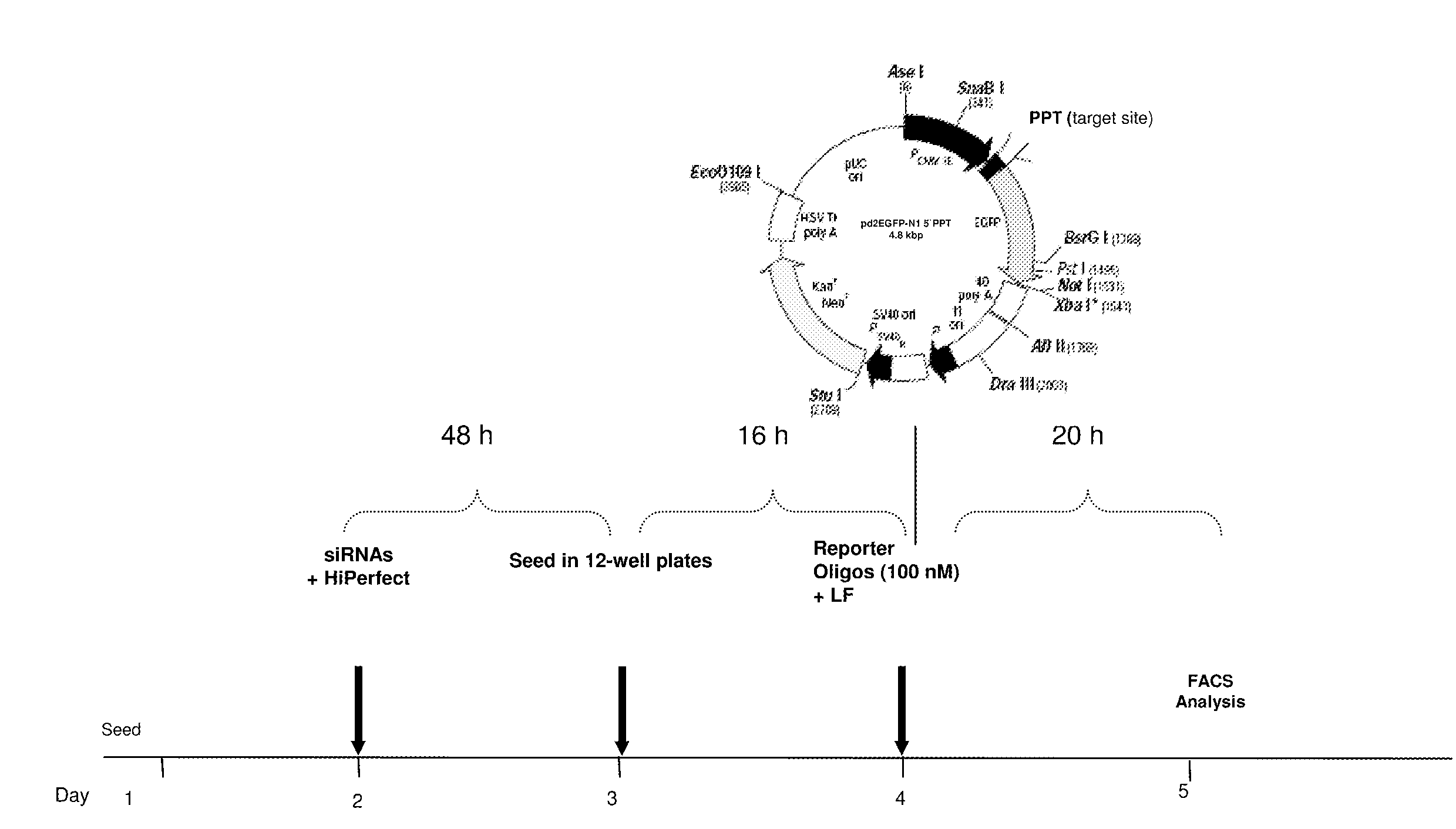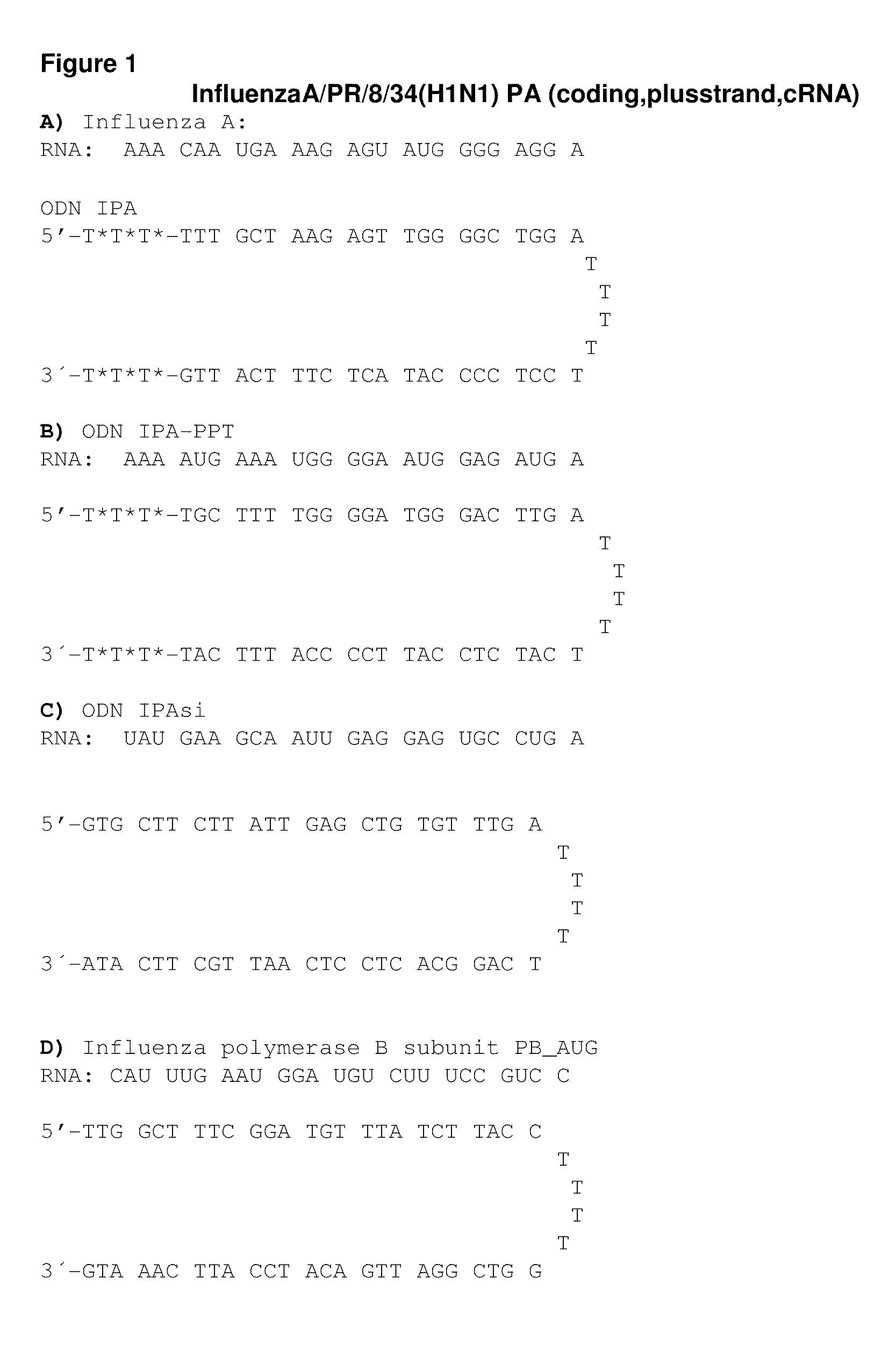siDNA against Influenza Virus
a technology of influenza virus and vaccine, applied in the field of vaccine against influenza virus, can solve the problems of 40,000 deaths, threat of a new influenza pandemic, limited value of existing vaccines and drug therapies,
- Summary
- Abstract
- Description
- Claims
- Application Information
AI Technical Summary
Benefits of technology
Problems solved by technology
Method used
Image
Examples
Embodiment Construction
[0054]Under the term “homology” the following should be understood: A siDNA oligonucleotide according to the invention comprises an antisense-strand which is more than 80% homologous to the viral RNA target and a second strand, which is partially complementary to the antisense-strand, forming a partially double stranded hairpin-loop-structure. The term “partially complementary” means a homology between 40 and 60% within the hairpin-loop.
[0055]The term “sequence identity” refers to a measure of the identity of the nucleotide sequences. In general, the sequences are aligned so that the highest order match is obtained. “Identity”, per se, has recognized meaning in the art and can be calculated using published techniques. (See, e.g.: Computational Molecular Biology, Lesk, A. M., ed., Oxford University Press, New York, 1988; Biocomputing: Informatics and Genome Projects, Smith, D. W., ed., Academic Press, New York, 1993; Computer Analysis of Sequence Data, Part I, Griffin, A. M., and Gri...
PUM
| Property | Measurement | Unit |
|---|---|---|
| length | aaaaa | aaaaa |
| time | aaaaa | aaaaa |
| stable | aaaaa | aaaaa |
Abstract
Description
Claims
Application Information
 Login to View More
Login to View More - R&D
- Intellectual Property
- Life Sciences
- Materials
- Tech Scout
- Unparalleled Data Quality
- Higher Quality Content
- 60% Fewer Hallucinations
Browse by: Latest US Patents, China's latest patents, Technical Efficacy Thesaurus, Application Domain, Technology Topic, Popular Technical Reports.
© 2025 PatSnap. All rights reserved.Legal|Privacy policy|Modern Slavery Act Transparency Statement|Sitemap|About US| Contact US: help@patsnap.com



